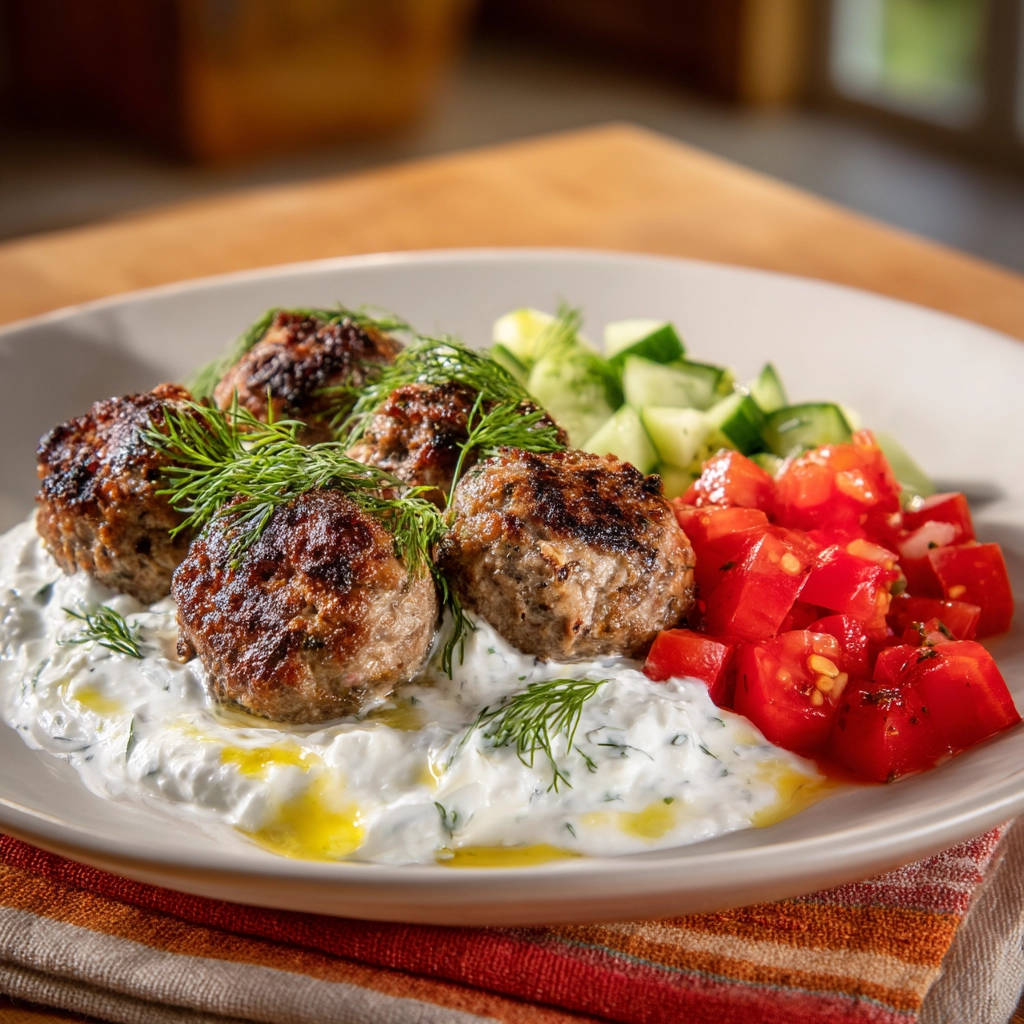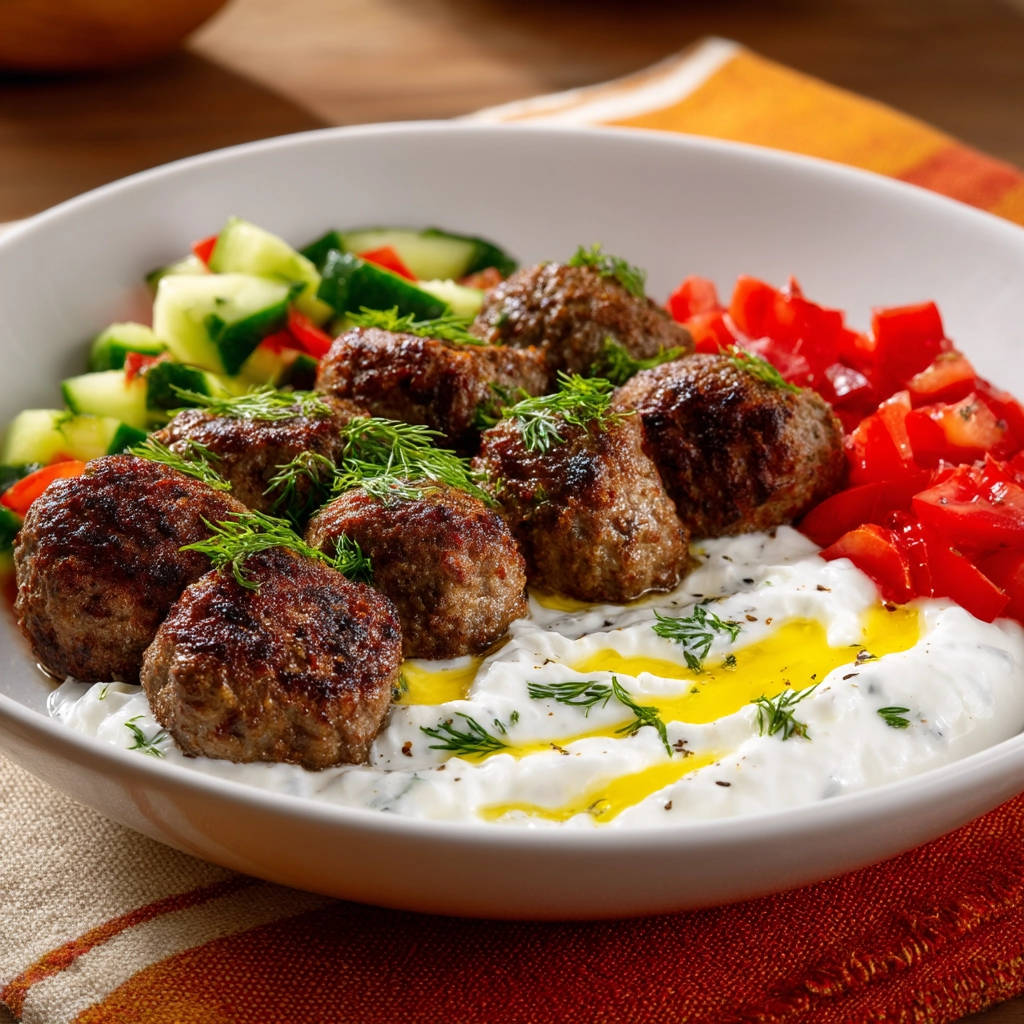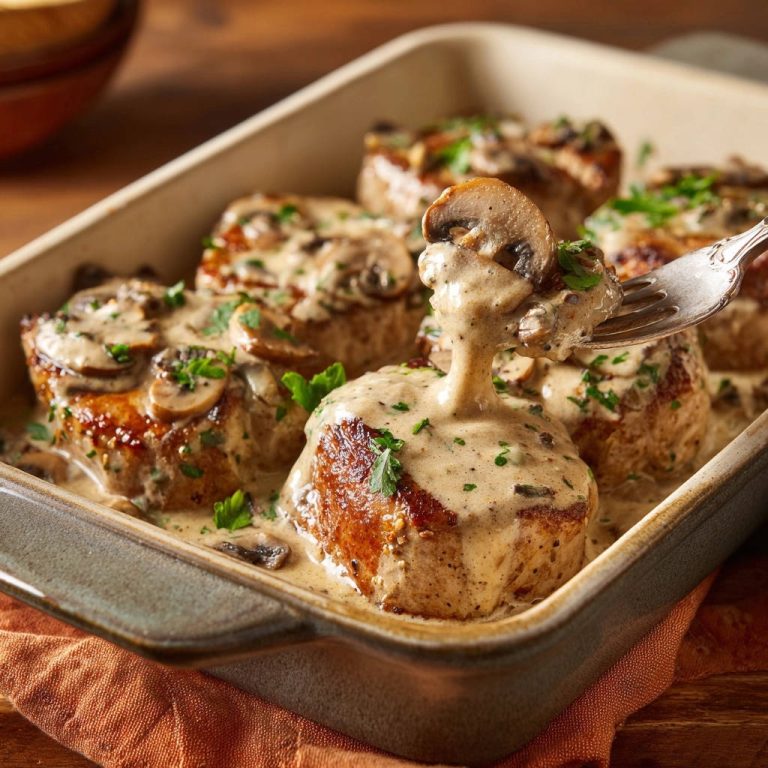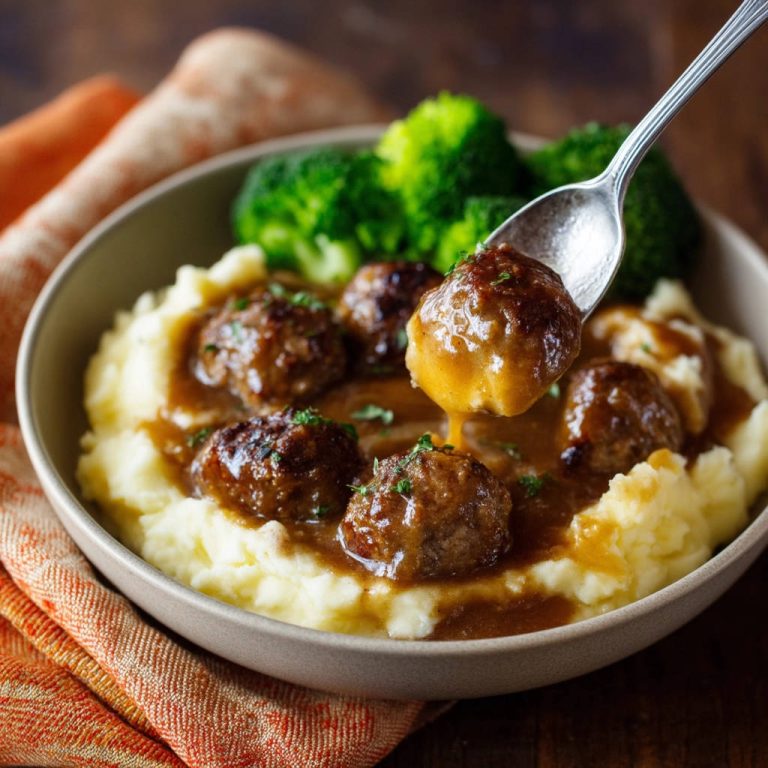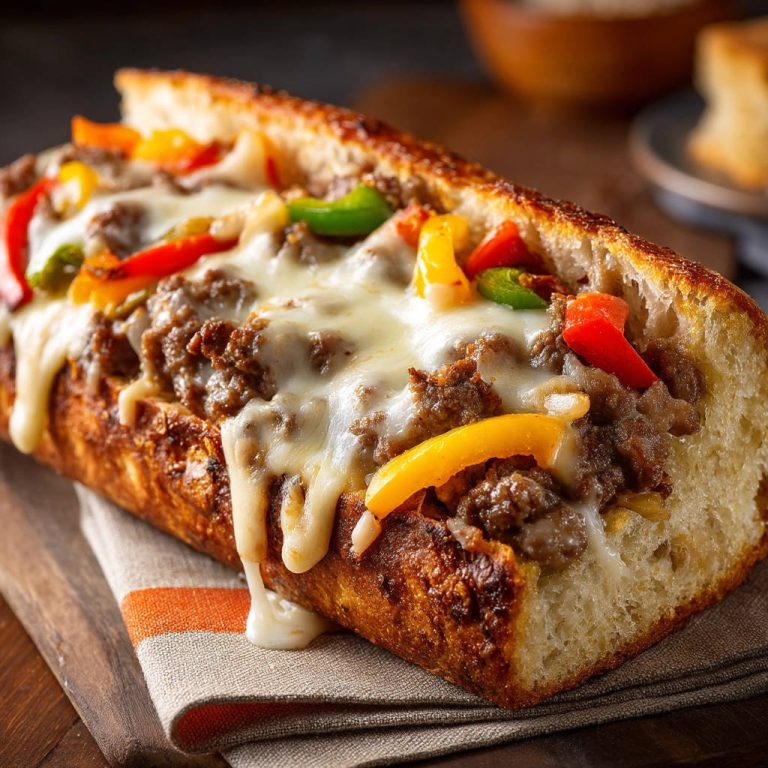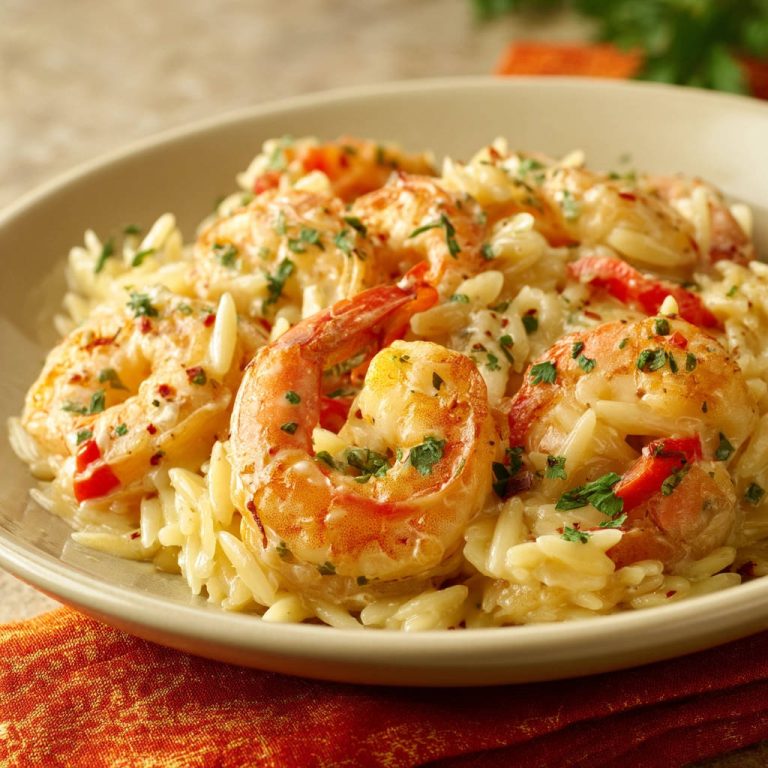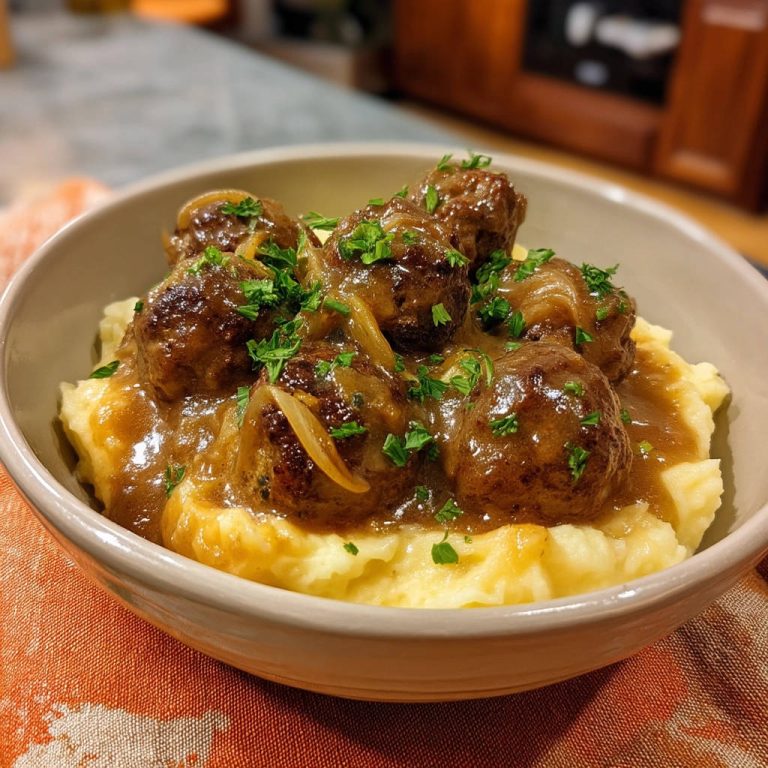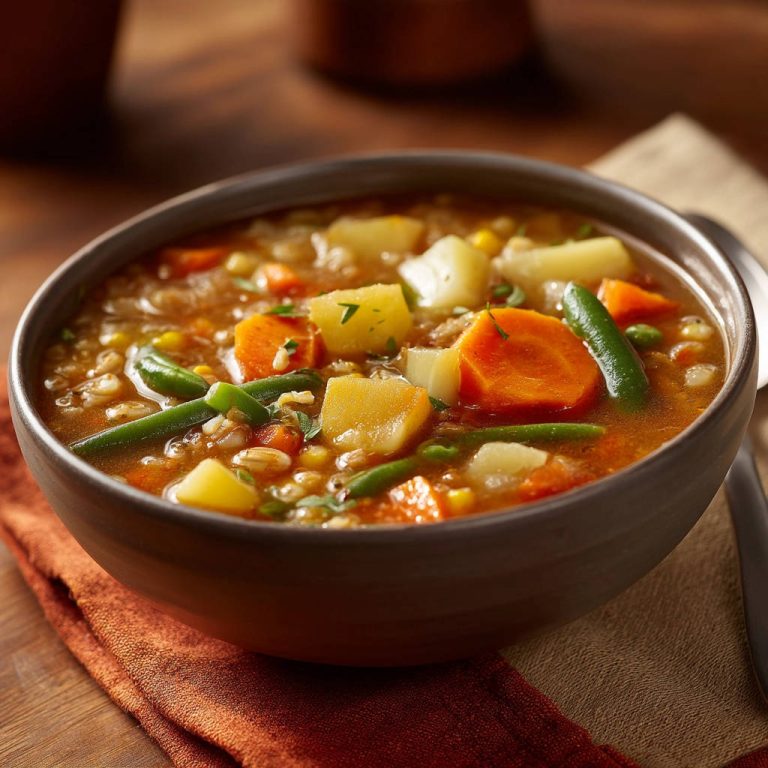There’s nothing quite as frustrating as anticipating a plate of delicious, flavorful meatballs, only to bite into one and discover it’s dry and dense. It’s a common kitchen heartache, especially when tackling classic recipes like Greek Keftedes. For years, I struggled to achieve that perfectly tender, moist texture that makes Keftedes so irresistible.
But guess what? I finally unlocked the simple secret! This recipe for Greek Keftedes ensures they are beautifully juicy every single time, served alongside a refreshing, homemade Tzatziki that complements them perfectly. Get ready to say goodbye to dry meatballs forever and welcome this Mediterranean delight into your cooking rotation.
Reasons This Greek Keftedes Recipe is a Keeper
Beyond simply avoiding dryness, there are so many wonderful reasons to make these Greek Keftedes:
- They are incredibly flavorful, packed with fresh herbs and aromatic spices.
- Quick and easy to make, perfect for a weeknight meal or weekend gathering.
- The combination of the warm Keftedes and cool, creamy Tzatziki is simply divine.
- Versatile! Serve them as an appetizer, a light lunch, or part of a larger mezze spread.
- Minimal cleanup required – most of the cooking happens in one skillet.
- A guaranteed crowd-pleaser, appealing to both kids and adults.
Gathering Your Ingredients for Perfectly Juicy Greek Keftedes
Creating succulent Keftedes and their essential cooling companion, Tzatziki, starts with selecting the right components. Each ingredient plays a crucial role in building layers of flavor and achieving that coveted moist texture. Here’s a breakdown of what you’ll need and why it matters.
For the Keftedes Base:
- Ground Meat: We use 1 pound of a ground beef and lamb mix. The blend gives you a fantastic depth of flavor, combining the richness of beef with the distinctive taste of lamb. You can certainly use all beef or all lamb based on your preference, but the mix is traditionally delicious.
- Finely Diced Onion: A quarter cup of onion, diced very finely, adds moisture and sweetness to the meatballs as they cook. Make sure it’s truly finely diced so you don’t get large crunchy bits in your Keftedes.
- Plain Breadcrumbs & Water or Milk: This is the cornerstone of our “no more dry” secret! A quarter cup of plain breadcrumbs soaked in an equal amount of water or milk absorbs liquid like a sponge before it even hits the meat. During cooking, this liquid releases slowly, keeping the Keftedes incredibly tender and juicy. Milk adds a touch more richness than water.
- Large Egg: One egg acts as a binder, helping all the ingredients hold together so your Keftedes don’t fall apart in the pan.
Flavor Builders:
- Fresh Chopped Dill: Two tablespoons of fresh dill are absolutely essential for that characteristic bright, slightly anise-like flavor of Greek cooking. Don’t skimp on this!
- Fresh Chopped Parsley (Optional): One tablespoon of fresh parsley adds another layer of herbaceous freshness. It’s listed as optional, but it truly enhances the overall taste profile.
- Dried Oregano: A teaspoon of dried oregano brings that earthy, slightly peppery classic Greek herb note.
- Garlic Powder: Half a teaspoon of garlic powder distributes garlic flavor evenly throughout the mix. While fresh minced garlic can be used, powder helps prevent raw garlic pockets and blends seamlessly.
- Salt and Freshly Ground Black Pepper: Seasoning is key! Add salt and pepper to taste to enhance all the other flavors.
- Olive Oil: You’ll need 2 tablespoons of olive oil for cooking the Keftedes. This helps them get a beautiful golden-brown crust.
For the Creamy Tzatziki:
- Plain Greek Yogurt: One cup of thick, plain Greek yogurt is the creamy base. Full-fat yogurt will give you the richest, most luxurious texture.
- Finely Grated Cucumber, Squeezed Dry: About half a cup once grated and squeezed. This adds a refreshing coolness, but it’s crucial to squeeze out as much water as possible using a clean towel or paper towels. Excess water will make your tzatziki watery instead of thick and creamy.
- Minced Garlic: One clove, minced finely. Fresh garlic provides a pungent, essential bite to balance the coolness of the cucumber and yogurt.
- Fresh Chopped Dill: One tablespoon echoes the dill in the Keftedes, tying the flavors together beautifully.
- Olive Oil: One tablespoon adds a touch of richness and classic Mediterranean flavor to the dip.
- Lemon Juice or White Wine Vinegar: One teaspoon provides essential acidity to brighten the flavors and cut through the richness of the Keftedes.
- Salt and Freshly Ground Black Pepper: Season the Tzatziki to your liking.
For Serving:
- Fresh Vegetables: One large tomato and half an English cucumber, both finely diced, provide a fresh, colorful, and textural contrast to the warm Keftedes and cool Tzatziki.
- Extra Fresh Dill Sprigs: For garnish – fresh herbs really make the plate pop.
- Extra Olive Oil: A final drizzle adds richness and shine just before serving.
Crafting Your Greek Keftedes: Step-by-Step to Juiciness
Follow these steps carefully, paying attention to the little details, and you’ll be rewarded with the most tender, flavorful Greek Meatballs!
-
Get the Tzatziki Ready: Your cooling cucumber dip is best when the flavors have a little time to meld. Grab a medium bowl and combine the thick Greek yogurt with the finely grated cucumber. Remember how we stressed squeezing the cucumber dry? Do that now! Add the minced garlic, chopped fresh dill, olive oil, and your choice of lemon juice or white wine vinegar. Stir everything together until it’s smooth and well combined. Taste and season with salt and pepper until it’s just right. Cover the bowl and pop it in the refrigerator while you make the Keftedes. This chilling time makes it even more refreshing.
-
Start the Keftedes Mix – The Secret Step: In a large mixing bowl, measure out your plain breadcrumbs. Now, pour the water or milk over them. Give it a quick stir to ensure all the breadcrumbs get wet. Let this mixture sit undisturbed for about 5 minutes. Watch as the breadcrumbs puff up and absorb all that liquid – this is the magic happening! This simple soak is the key to preventing dry Keftedes.
-
Combine the Keftedes Ingredients: Once the breadcrumbs have soaked up the liquid and look softened and expanded, add the ground meat (your beef and lamb mix, or whichever you chose). Now, add the finely diced onion, the large egg, the chopped fresh dill, the parsley (if you’re using it), the dried oregano, garlic powder, salt, and pepper. Everything for the Keftedes mix should now be in the bowl on top of the soaked breadcrumbs.
-
Mix Gently (Seriously, Be Gentle!): This is the second crucial step to avoiding tough, dry Keftedes. Using your hands (the best tools for the job!), gently mix everything together. Think of it less like kneading dough and more like lightly combining until the ingredients are just evenly distributed. Overmixing develops the protein in the meat and makes the meatballs tough and dense. Stop mixing as soon as you no longer see streaks of plain meat and all the ingredients are incorporated.
-
Shape Your Keftedes: Now it’s time to form the mixture into individual Keftedes. You can roll them into classic meatballs, about 1 1/2 inches in diameter, or flatten them slightly into small patties. Aim for roughly the same size so they cook evenly. Depending on how large you make them, you should get somewhere between 12 and 16 Keftedes from this mixture.
-
Cook Those Beauties: Heat the olive oil in a large skillet over medium-high heat. You want the oil to be hot enough to sear the Keftedes properly, which helps lock in juices and develop a delicious brown crust. Carefully place the formed Keftedes into the hot skillet in a single layer. Do not overcrowd the pan – this is important! If you put too many in at once, the temperature of the pan will drop, and they’ll steam instead of sear. Cook in batches if necessary. Sear for about 3-4 minutes on each side, rotating them with tongs, until they are deeply browned all over and cooked through. For a beef/lamb mix, they should reach an internal temperature of 160 degrees F. Resist the urge to cut into them to check for doneness while they’re cooking in the pan; use a thermometer instead if you’re unsure. The searing process not only builds flavor but also helps keep the inside moist.
-
Assemble Your Plate: Time to bring it all together! Spoon a generous layer of the chilled Tzatziki onto the bottom of your serving plate. The cool, creamy base is perfect for the warm Keftedes.
-
Add the Fresh Sides: Place the finely diced fresh tomato and cucumber next to the Keftedes on the plate. Their bright color and crisp texture provide a lovely contrast.
-
Garnish and Serve: Finish the dish by drizzling a little extra olive oil over the Keftedes and the Tzatziki. This adds richness and shine. Garnish with fresh dill sprigs for a final burst of color and aroma. Serve immediately while the Keftedes are warm and the Tzatziki is cool!
Tips for Perfect Keftedes Every Time
Making these Greek Keftedes is straightforward, but a few expert tips can take them from great to absolutely unforgettable:
-
Temperature Matters: Ensure your ground meat is cold when you start mixing. Cold fat helps the Keftedes hold their shape better and contributes to a juicier result. Using room temperature meat can sometimes lead to a greasier texture.
-
Finely Dice Everything: We mentioned it for the onion, but ensure your fresh herbs are also finely chopped. This helps distribute their flavor evenly throughout the meatball.
-
Rest the Mix: After you’ve mixed the ingredients (gently!), cover the bowl and let it chill in the refrigerator for 15-30 minutes before forming the Keftedes. This helps the flavors meld and makes the mixture easier to handle.
-
Uniform Size: Try to make your Keftedes or patties roughly the same size. This ensures they cook evenly and finish at the same time. Using a small scoop can help with this.
-
Don’t Overcrowd the Pan: This tip is worth repeating because it’s so important for achieving a good sear instead of a pale, steamed exterior. Cook in batches if necessary.
-
Let Them Rest (Briefly): Just like cooking a steak, letting the cooked Keftedes rest for a minute or two off the heat before serving allows the juices to redistribute, keeping them extra moist. You can simply transfer them to a plate while you finish cooking the other batches.
-
Taste and Adjust the Tzatziki: Before serving, give your Tzatziki another quick taste. You might want to add a tiny pinch more salt, pepper, or a squeeze of lemon juice to brighten it up right before it hits the plate.
What to Serve With Your Greek Keftedes
These juicy Greek Keftedes are fantastic on their own, but they really shine when paired with classic Greek accompaniments. A simple Greek salad with feta and olives is always a winner. Pita bread, warmed or lightly grilled, is perfect for scooping up the Keftedes and Tzatziki. Serve alongside some easy pan-fried potatoes for a complete meal, or with easy Mexican rice for a flavorful twist (though perhaps not traditionally Greek!).
Your Greek Keftedes Questions Answered (FAQ)
Got questions about making the best Greek Keftedes? Here are some answers to common inquiries:
Can I use just beef or just lamb?
Absolutely! The recipe calls for a beef and lamb mix for classic flavor, but you can certainly use 1 pound of all ground beef or all ground lamb if that’s what you prefer or have on hand. The cooking time and method will remain the same, and the breadcrumb-soaking trick will still keep them juicy.
What if I don’t have fresh dill?
Fresh dill is highly recommended for authentic Greek flavor in both the Keftedes and the Tzatziki. If you absolutely cannot find fresh dill, you can substitute with dried dill, but use less, as dried herbs are more concentrated. A good rule of thumb is 1 teaspoon of dried dill for every 1 tablespoon of fresh. The flavor won’t be quite as vibrant, though.
Can I bake these Keftedes instead of pan-frying?
While this recipe focuses on pan-frying for that lovely sear and quicker cook time, you can bake Keftedes. Place them on a parchment-lined baking sheet and bake in a preheated oven at around 400°F (200°C) for 15-20 minutes, or until cooked through and they reach an internal temperature of 160°F. You won’t get the same deep crust as pan-frying, but they will still be juicy thanks to the breadcrumb method. If you love working with ground meat, you might also enjoy making classic meatloaf or creamy meatballs using similar gentle techniques.
How do I store leftover Keftedes and Tzatziki?
Store cooked Keftedes and Tzatziki separately in airtight containers in the refrigerator. The Keftedes will last for 3-4 days, and the Tzatziki for 4-5 days (though it’s best enjoyed fresh within a couple of days). Reheat Keftedes gently in a skillet, oven, or microwave.
Can I freeze Keftedes?
Yes, Keftedes freeze well! You can freeze them cooked or uncooked. To freeze uncooked, place the formed Keftedes on a baking sheet and freeze until solid, then transfer to a freezer-safe bag or container for up to 3 months. Thaw overnight in the refrigerator before cooking as directed. To freeze cooked Keftedes, let them cool completely, then store in a freezer-safe container for up to 3 months. Thaw and reheat thoroughly.
How can I make this gluten-free or dairy-free?
To make the Keftedes gluten-free, simply substitute the plain breadcrumbs with certified gluten-free breadcrumbs or even almond flour or a small amount of cooked rice. For dairy-free Keftedes, use water instead of milk to soak the breadcrumbs. To make the Tzatziki dairy-free, use a plain, unsweetened dairy-free yogurt alternative (like coconut or almond-based yogurt), ensuring it’s thick enough for the dip.
Enjoy Your Homemade Greek Keftedes!
Making these juicy Greek Keftedes at home is incredibly rewarding. They are bursting with fresh, aromatic flavors and have that wonderfully tender texture we all crave. The simple trick of soaking the breadcrumbs truly makes all the difference! Serve them warm with the cool, zesty Tzatziki and fresh vegetables for a meal that transports you straight to the Mediterranean.
Give this recipe a try and let me know what you think in the comments below! Did the breadcrumb trick work wonders for you too? Happy cooking!
Greek-Style Keftedes
Ingredients
- For the Keftedes:
- 1 pound ground beef and lamb mix (or all beef or all lamb)
- 1/4 cup finely diced onion
- 1/4 cup plain breadcrumbs
- 1/4 cup water or milk
- 1 large egg
- 2 tablespoons fresh chopped dill
- 1 tablespoon fresh chopped parsley (optional, based on image)
- 1 teaspoon dried oregano
- 1/2 teaspoon garlic powder
- Salt to taste
- Freshly ground black pepper to taste
- 2 tablespoons olive oil, for cooking
- For the Tzatziki:
- 1 cup plain Greek yogurt
- 1/2 cup finely grated cucumber, squeezed dry
- 1 clove garlic, minced
- 1 tablespoon fresh chopped dill
- 1 tablespoon olive oil
- 1 teaspoon lemon juice or white wine vinegar
- Salt to taste
- Freshly ground black pepper to taste
- For Serving:
- 1 large tomato, finely diced
- 1/2 English cucumber, finely diced
- Extra fresh dill sprigs
- Extra olive oil for drizzling
Directions
- Prepare the tzatziki: In a medium bowl, combine the Greek yogurt, grated cucumber (make sure to squeeze out excess water using a clean towel or paper towels), minced garlic, chopped dill, olive oil, and lemon juice or vinegar. Stir well to combine. Season with salt and pepper to taste. Cover and refrigerate until ready to serve.
- Prepare the keftedes mix: In a large bowl, combine the breadcrumbs with the water or milk. Let stand for 5 minutes to allow the breadcrumbs to absorb the liquid. This is key for moisture. Add the ground meat, finely diced onion, egg, chopped dill, parsley (if using), oregano, garlic powder, salt, and pepper to the bowl with the soaked breadcrumbs.
- Mix gently: Using your hands, mix the ingredients together until just combined. Be careful not to overmix, as this can make the keftedes tough. Overmixing is another common cause of dryness.
- Form the patties: Roll the mixture into approximately 1 1/2 inch meatballs or flattened patties, similar to what is shown in the image. You should get about 12 to 16 keftedes depending on size.
- Cook the keftedes: Heat the olive oil in a large skillet over medium high heat. Once the oil is hot, carefully add the keftedes to the skillet in a single layer. Do not overcrowd the pan; cook in batches if necessary to ensure they brown properly. Sear for about 3-4 minutes per side, until deeply browned on all sides and cooked through. They should reach an internal temperature of 160 degrees F for beef/lamb mix. This searing locks in juices while developing flavor. Avoid cutting into them while cooking.
- Assemble the dish: Spoon a generous amount of the prepared tzatziki onto the bottom of a serving plate. Arrange the cooked keftedes on top of the tzatziki.
- Add the sides: Place the finely diced tomato and cucumber next to the keftedes on the plate.
- Garnish and serve: Drizzle a little extra olive oil over the keftedes and the tzatziki. Garnish with fresh dill sprigs as shown in the image. Serve immediately.

